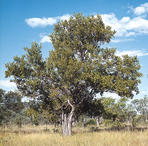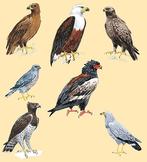
About the Skukuza Area
At Skukuza Camp
Paul Kruger Gate
Phabeni Gate
Phabeni to Skukuza
Rhino Koppies Route
Sabie Sands Loop
Skukuza to Lower Sabie
Skukuza to Satara
Tshokwane and Surrounds
Tshokwane to Lower Sabie
Tshokwane to Satara
See Kruger Park Skukuza Area Self-drive Map

Many lion prides hunt in this area without competing because there is plenty of game to go around. The degree of potential prey is evident from the number of game trails that traverse the roads from the grasslands to the water's edge where there are big marulas, knob-thorns, weeping boer-beans, sycamore figs, jackal-berries and matumis.
Sabie Sands Loop is a good road to do early in the morning because of the chances of coming across a kill from the night before. Mid- to late afternoon is the other good time to do this drive, as this is when the big carnivores become active.
Vultures often arrive in the afternoon at quiet pools on the Sand River for a bath. Despite their reputation as bloody scavengers, they are actually quite clean birds, using water and sand to wash off parasites on a daily basis.
Although there is usually heavy tourist traffic on this road, it is probably the best chance the visitor has of seeing lion and a variety of other game in the shortest space of time. There are several stopping points overlooking both rivers and a number of loop roads that take one into the thorn thickets.
There is a good get-out spot at the Mutlumuvi looking over reed beds and thick riverine forest on the other side. Maroela Loop off the H1-2 takes one away from the river into the thorn thickets. Although visibility through the bush is limited in summer because of the dense vegetation, this can be a productive drive for game viewing and birding.
Red Bushwillow The staple diet for browsers. One of the staple diets of browsers is the red bushwillow (Combretum apiculatum). Found throughout the Park but dominant in the south, this smallish deciduous tree is the second-most common tree after mopane and the leaves are eaten by elephant, giraffe, kudu, bushbuck, impala, eland, klipspringer and steenbok.
Traditional healers make a concoction from the leaves to treat stomach disorders. While its leaves are palatable, animals avoid its seeds which are mildly poisonous and can cause prolonged hiccupping.
The red bushwillow supports a lot of insect life which makes it a popular tree for insect-eating birds. It gets its name from the fact that its leaves turn reddish brown in winter.
Its drought-resistance ensures that it is a food source for browsers even in the driest of times. It is recognisable by the small, four-winged clusters of fruit that ripen in late summer and autumn.
Kruger's Birds of Prey
The Kruger Park is renowned for its raptors, many of which can be seen in the Skukuza area. Among the birds of prey associated with Skukuza and the Sabie River are Wahlberg's eagle which nests along the river, the conspicuous African fish-eagle, the tawny eagle, a quiet bird that likes more open habitats, and that carrion scout, the bateleur.
The martial eagle hunts along the Sabie for its favourite food, the leguaan, while the African harrier-hawk (gymnogene) busies itself in the forest canopy looking for nests to raid. The shikra (little banded goshawk) is one of the most prominent smaller raptors found along the Sabie.
Left to right - Top row: Tawny eagle, African fish-eagle, Wahlberg's eagle.
Centre: Shikra, Bateleur eagle
Bottom: Martial eagle, African harrier-hawk

 Skukuza Rest Camp in Kruger National Park is a popular rest camp situated in the heart of Kruger Park. Many visitors think Skukuza Rest Camp...
Skukuza Rest Camp in Kruger National Park is a popular rest camp situated in the heart of Kruger Park. Many visitors think Skukuza Rest Camp...